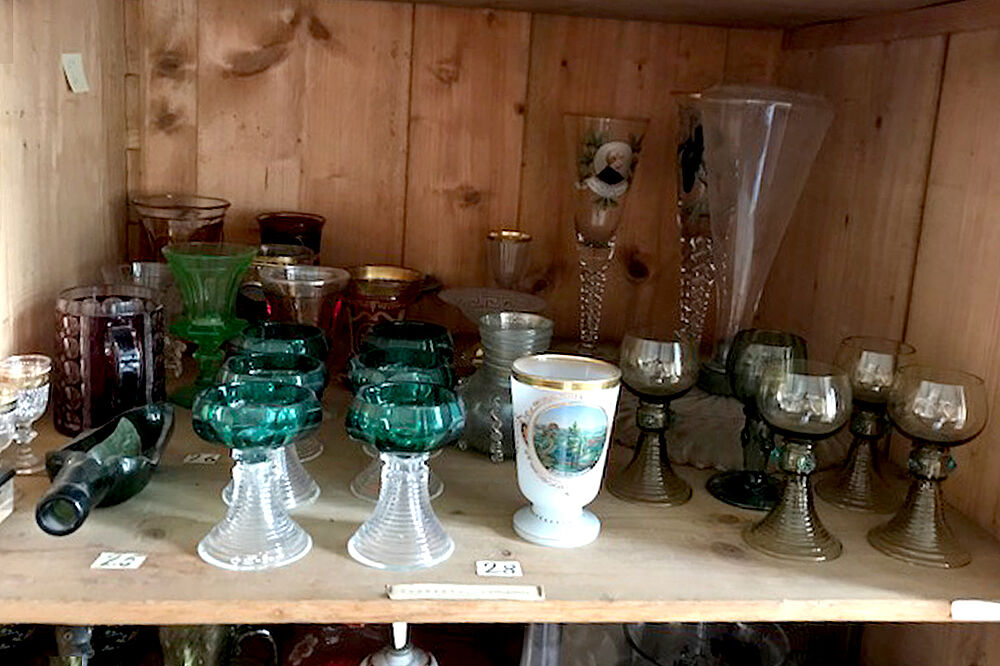Restitution
The restitution of artistic and cultural assets
Researching into the provenance of items in its own museums is an important central task for the cultural foundation. This includes not only searching its holdings for art looted by the Nazis but also identifying artistic and cultural assets taken from individuals in GDR times and due to be returned to them under the 1990 act on the restitution of property (Vermögensgesetz). Under the Indemnification and Compensation Act passed by the German Bundestag on 27 September 1994, the foundation is also obliged to return “movable objects” – mainly artistic and cultural assets – expropriated between 1945 and 1949 in the Soviet Occupation Zone on the grounds of “land reform”.
At the time, Moritzburg Castle in Halle an der Saale was used as a central storage facility for expropriated artistic and cultural assets for the Province of Saxony (since 1947: Saxony-Anhalt). Proof has been found of the provenance of some 130 items. Numerous rooms of Wernigerode Castle were used as an external storage area. In 1994, the castle’s museological holdings comprised roughly 30,000 items, including paintings and prints, furniture, textiles, weapons, porcelain, faience, precious silver and glass pieces and a variety of archival materials, such as bequeathed writings, historical documents, maps, plans and photographs. About half of these collections, which have been state-owned and managed by the cultural foundation since 1995, came from 80 expropriation measures taken as part of land reform. Expropriated artistic and cultural assets also entered the foundation's museums at Falkenstein and Neuenburg Castles.




Since 1996, the regional offices responsible for settling unresolved property issues in Saxony-Anhalt, Thuringia and Saxony have sent the cultural foundation roughly 280 queries on the location of artistic and cultural assets of this kind. By September 2018, around 27,000 items in the collections at the castles of Moritzburg, Wernigerode, Falkenstein and Neuenburg were unambiguously identified as expropriated artefacts, assigned to their former owners and restored to them under property law. Moreover, on the basis of the law on the restitution of property, 920 works of art were returned from the storage areas of Wernigerode Castle alone. Since the year 2000, however, it has also been possible to acquire numerous museum pieces subject to restitution, including several valuable paintings, as part of joint agreements. These were purchased for the Saxony-Anhalt regional art museum at Moritzburg Castle, for Letzlingen Hunting Lodge and for Neuenburg Castle with a total value of over 240,000 euros.




Moritzburg Castle in Halle: central storage area for expropriated artistic and cultural assets
A research project by Kulturstiftung Sachsen-Anhalt in cooperation with the German Lost Art Foundation
On 3 September 1945, the government of the Province of Saxony issued a decree on land reform. This was intended to put an end to “feudal” large-scale land-holding and the “rule” of esquires and big land-owners. In the Province of Saxony, more than 2,200 estates were subsequently expropriated. Their owners had mostly fled or been expelled. The inventory left behind in the castles and manor houses – not only works of art such as paintings and sculptures, but also furniture, weapons, libraries and archives – was now considered “ownerless”. To protect it from misuse, destruction and theft, it was initially placed under the special protection of the Province and kept in stack rooms at shared storage facilities. The main storage site used to “protect” these cultural assets in the Province of Saxony (federal state of Saxony-Anhalt) was at Moritzburg Castle, Halle an der Saale, with local facilities in the castles at Wernigerode and Beichlingen.
On 3 September 1945, the government of the Province of Saxony issued a decree on land reform. This was intended to put an end to “feudal” large-scale land-holding and the “rule” of esquires and big land-owners. In the Province of Saxony, more than 2,200 estates were subsequently expropriated. Their owners had mostly fled or been expelled. The inventory left behind in the castles and manor houses – not only works of art such as paintings and sculptures, but also furniture, weapons, libraries and archives – was now considered “ownerless”. To protect it from misuse, destruction and theft, it was initially placed under the special protection of the Province and kept in stack rooms at shared storage facilities. The main storage site used to “protect” these cultural assets in the Province of Saxony (federal state of Saxony-Anhalt) was at Moritzburg Castle, Halle an der Saale, with local facilities in the castles at Wernigerode and Beichlingen.
Contact person
- Prof. Dr. Konrad Breitenborn
- Restitution
- Kulturstiftung Sachsen-Anhalt | Dienststelle Schloss Wernigerode
- Am Schloß 1
- 38855 Wernigerode
- T: +49 3943 5415-0
- F: +49 3943 5415-34
- wernigerode@kulturstiftung-st.de

